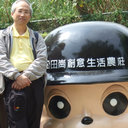Overweight associated with increased risk of erosive esophagitis in a non-obese Taiwanese population.
Ключові слова
Анотація
OBJECTIVE
To investigate the relationship between overweight and erosive esophagitis (EE) in a non-obese Taiwanese population.
METHODS
A total of 7,352 subjects (non-obese, 5,826; obese, 1,526) from a health examination center at National Cheng Kung University Hospital were enrolled. Central obesity was defined by a waist circumference (WC) ≥ 90 cm in male and 80 cm in female. Overweight was defined as body mass index (BMI) of 24-26.9 kg/m(2), and general obesity as BMI ≥ 27 kg/m(2). The Los Angeles classification was adopted to determine the presence of EE.
RESULTS
There were significant differences in the prevalence of central obesity and different BMI status between subjects with and without EE in total and non-obese population. In total population, multivariate analyses revealed central obesity (OR, 1.17, 95% CI, 1.02-1.34, p = 0.021) and being obese (OR, 1.28, 95% CI, 1.07-1.52, p = 0.007)/overweight (OR, 1.25, 95% CI, 1.08-1.45, p = 0.003) had positive associations with EE in different model, respectively. When considering the joint effect of central obesity and BMI status, overweight (OR, 1.22; 95% CI, 1.04-1.44; p = 0.016) remained as an independent associated factor of EE but central obesity (OR, 1.06; 95% CI, 0.89-1.26; p = 0.549)/being obese (OR, 1.22; 95% CI, 0.98-1.53; p = 0.082) did not. As for non-obese group, separate model showed central obesity (OR, 1.19, 95% CI, 1.00-1.40, p = 0.046) and overweight (OR, 1.24; 95% CI, 1.07-1.44, p = 0.005) was positively associated with EE, respectively. However, being overweight (OR, 1.20; 95% CI, 1.02-1.42, p = 0.030) but not central obesity (OR, 1.08; 95% CI, 0.90-1.31; p = 0.398) was positively related to EE with considering the effect of overweight and central obesity simultaneously.
CONCLUSIONS
Overweight effect on EE was more detrimental than central obesity in non-obese subjects. In addition, male gender, hiatus hernia and alcohol use were also associated with increased risk of EE.



